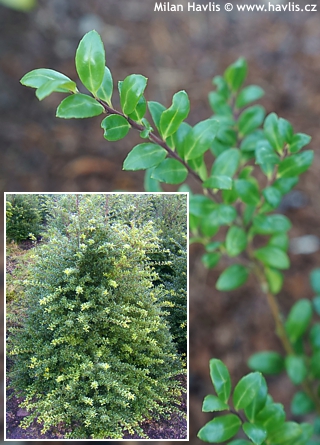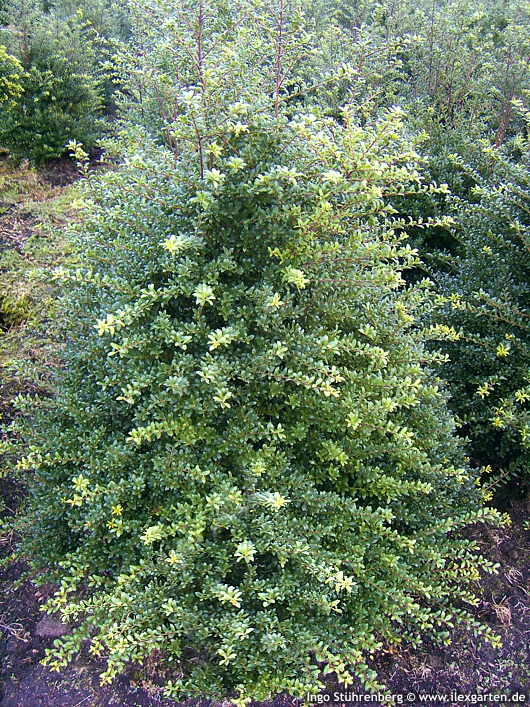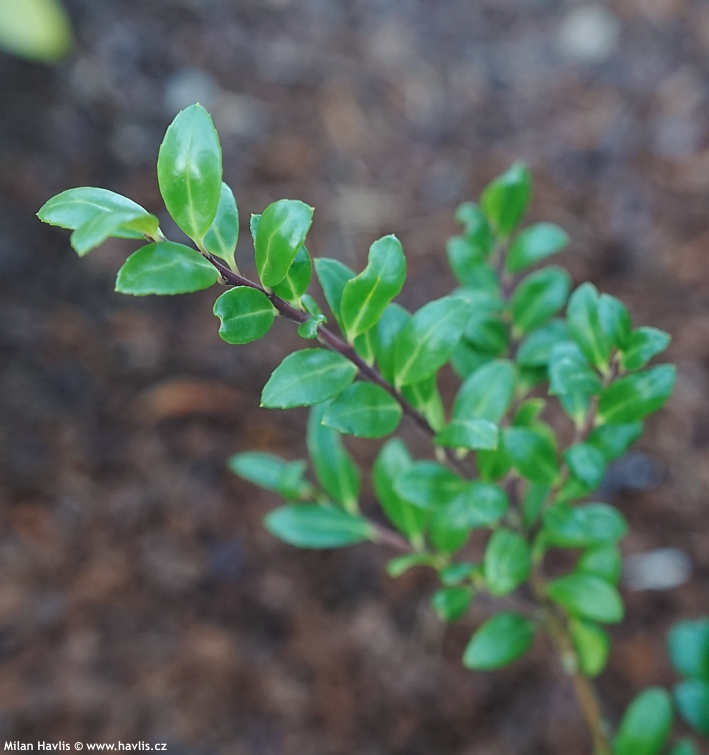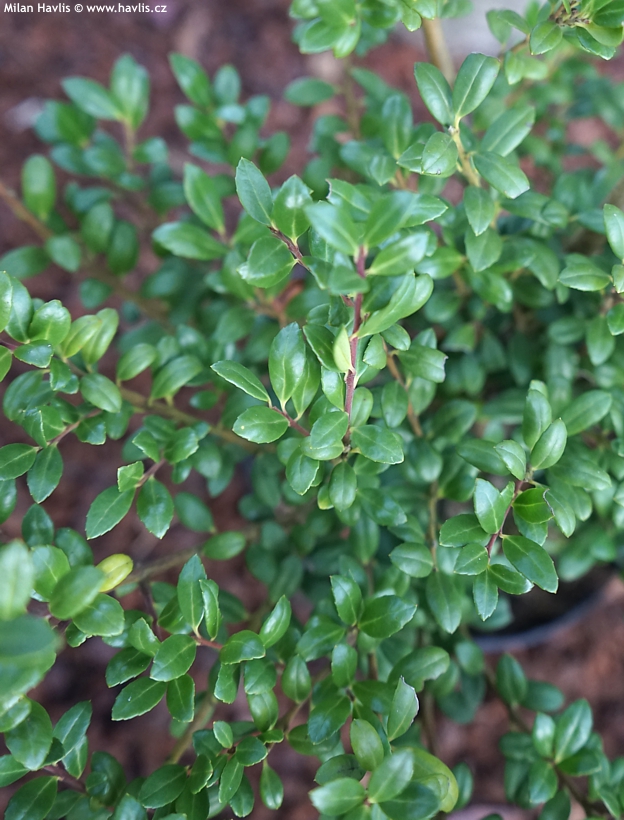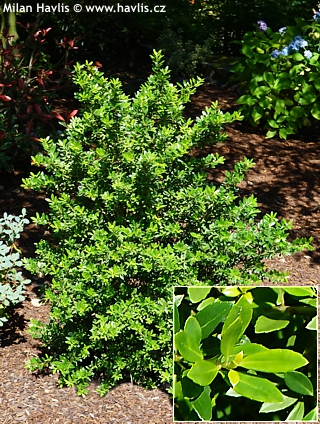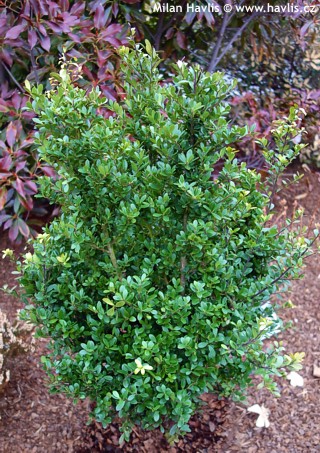Ilex crenata 'ELLIPTA CONVEX' Japanese holly
size/type
medium-sized shrub,medium-sized shrub
usual height
1,3-1,8m
usual width
1-1,5m
leaves
evergreen broadleaf
colour of leaves
location
full sun to shade
soil type
acidic (peaty)
soil moisture requirements
evenly moist (dislikes drought)
USDA zone (lowest)
5 (down to -29°C)
winter protection
for zone 5+6

for zone 7

categorized
Ilex
Many people mistake Japanese holly for English box thanks to its small, evergreen leaves. This resemblance was also the main reason why it was chosen to become the hardy substitute for true box which is dying in all Europe as well as in the UK. Japanese holly a versatile, evergreen, and almost maintenance-free plant available in many varieties offering different shapes and sizes.Description of the plant:
Ellipta Convex is a Japanese holly that stands halfway between two other varieties: Ellipta Elegans (newer) and Convexa (older). It was bred by Ernst Stührenberg in his nursery in Germany and introduced in 1989. Its evergreen leaves are small, broadly elliptic, very glossy, bright chartreuse as they emerge and dark green when they mature. They are not flat but slightly convex. In mid spring opens a profusion of small, creamy white flowers serving plenty of bee food. It is a female variety so if pollinated by a male plant from nearby they are followed by small, black berries in autumn. They are not edible nor poisonous for people but contain saponins which cause severe discomfort if eaten in quantity. They are important bird food in winter.It naturally forms a dense, broadly pyramidal, somewhat tiered shrub slightly over 1.5m tall and a bit less wide. As every other Japanese holly it is ideal for bonsai making as well as for hedging. You can use it like a box plant - in the same spot or a container or among other large-leaved, evergreen plants to which its delicate foliage will provide a great contrast.
It can be pruned and clipped in almost any way from early spring by end July. Japanese holly is usually trouble-free, tolerates any soil apart from compacted (clay) and boggy, and can withstand summer dry spells once established. However, for best results and leaf colour grow it in medium fertile, moist but well-drained acid soil. Fully hardy to abt. -27°C (USDA zone 5b).
Last update: 01-12-2020
QUICK PRICE OVERVIEW
CURRENTLY SOLD OUT
WANT TO TRY A SIMILAR PLANT?












